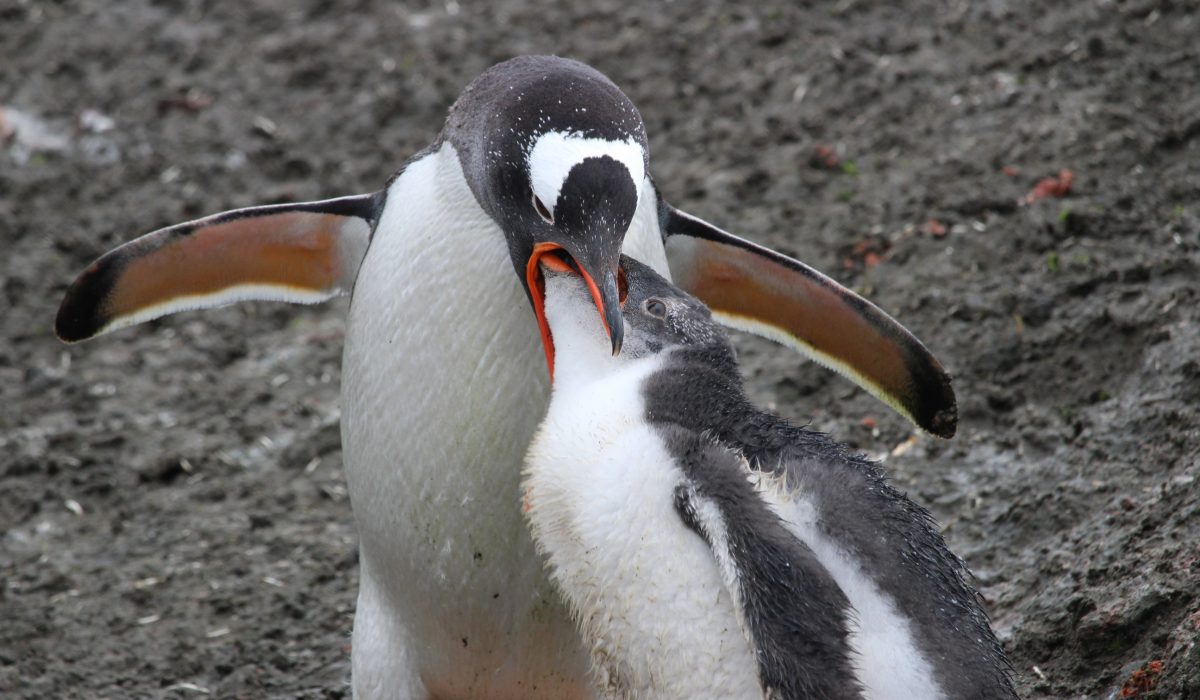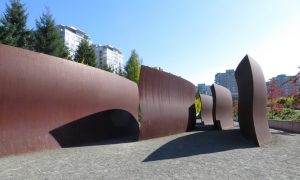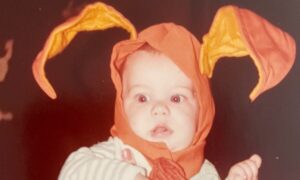by Kate Dernocoeur, guest blogger.
How can a heart not melt when amongst penguins?

This, my first close encounter, came January 29, 2017 on our voyage’s first foray onto the Antarctic landscape. This chinstrap penguin looking directly into the camera can’t possibly be for real…can it? I know anthropomorpholizing animals is antiquated, but, gosh, it was impossible not to attribute any number of endearing adjectives to these hardy, impressive creatures.
We had just landed on one of the Aitcho islands in the South Shetland Island group off the northwest corner of the Antarctic Peninsula. The area was mapped in 1935 (“Aitcho” stands for “H.O.” short for the Hydrographic Office of the British Admiralty). We were just on the other (south) side of Drake Passage, still far enough north for color in the landscape: brown/black mud, green moss and algae, red/pink hued penguin guano, plus the “orange penguins” (the people like me!).
Rules set up by treaty and tour companies protect these precious creatures; we were to stay 15 feet or more away from them. No one wants to cause them any more stress than their natural environment already throws at them. However, we were told, there was nothing to stop them from coming up to us. If that happened (and it often did), we should simply stop and enjoy it. For having such short legs, they got around impressively efficiently, walking (well, more like waddling) ever so purposefully, or hopping from rock to rock.
![Gentoo penguin in mud]](https://i0.wp.com/designdestinations.org/wp-content/uploads/2018/05/IMG_3441.jpg?resize=500%2C333&ssl=1)
The colony was a cacophony of braying unlike anything I’d ever heard, impossible to describe adequately. Each family unit is connected by unique calls that help individuals find one another. One penguin might start it, braying with flippers outstretched and beak pointed straight up. The nearby neighbors would join in, then a dozen family units, then tens of dozens until a wave of noise washed across the colony. Sometimes, to my ears, it sounded like everyone was calling out, “I know. I know. I Know. I KNOW!”

The nests, in shallow divots lined with rocks, were half-empty and hardly used anymore by the time in the season when we arrived. A typical pastime among penguins is stealing the rocks that line the nests.

By the end of January, chicks were nearly the size of their parents and would soon molt, get their adult plumage, and head to sea. Meanwhile, though, they were fluffy and comical and every bit as awkward (and demanding) as teenagers anywhere.

At a certain point, most of the adults head out to sea to eat, nourishing themselves and bringing back half-digested seafood ready to regurgitate into the eager mouths of their progeny.

Fewer adults on hand means increased vulnerability for the chicks, who stand in groups (known as “creches”) monitored by the adults remaining behind to keep guard. The goal: not to be picked off by a brown skua.
![A brown skua, a large seabird who makes a big part of its “living” preying on penguin eggs and chicks.]](https://i0.wp.com/designdestinations.org/wp-content/uploads/2018/05/IMG_3498.jpg?resize=500%2C333&ssl=1)
Battles to beat back the skuas were frequent and raucous. They are often scared off, but sometimes they hunted in pairs. While one distracted the adults on one side, the other could sneak in from behind and perhaps get away with some food.
Sharing the Aitcho beach were some elephant seals in the midst of their summer molt. A grumpy lot (molting is said to be relatively unpleasant for them), they added to the ambience with abundant grunts and groans, shifting their ponderous bodies from time to time.
I wondered what the penguins thought of our “home” as we prepared to move on to our next adventure.
More about Antarctica will come to “Generally Write” and DesignDestinations soon. Stay tuned!
Kate said I could say whatever I wanted in her bio for this blog post. My description of her includes writer, volunteer fire fighter, hiker, friend, blogger, writer, adventurer, Mother, lover of animals, horse back rider and really terrific person. How she finds time to do all she does I don’t know. I do know its great fun to have her in my life and on DesignDestinations.org.
Kate’s blog is called Generally Write.












Comments
1 CommentCruising on the M.V Stella Australis | DesignDestinations
May 21, 2018[…] another post on penguins go to Kate’s blog post about penguins. . She saw them last winter in […]